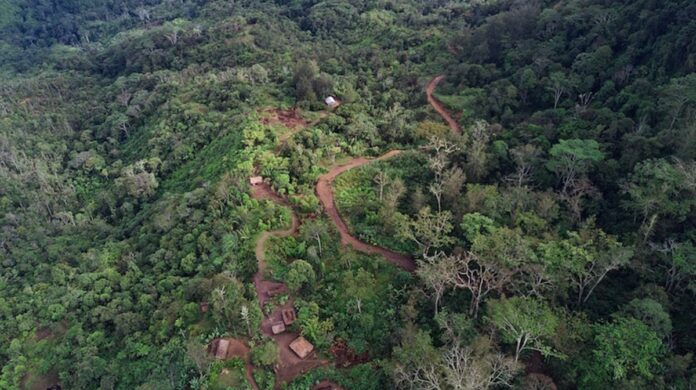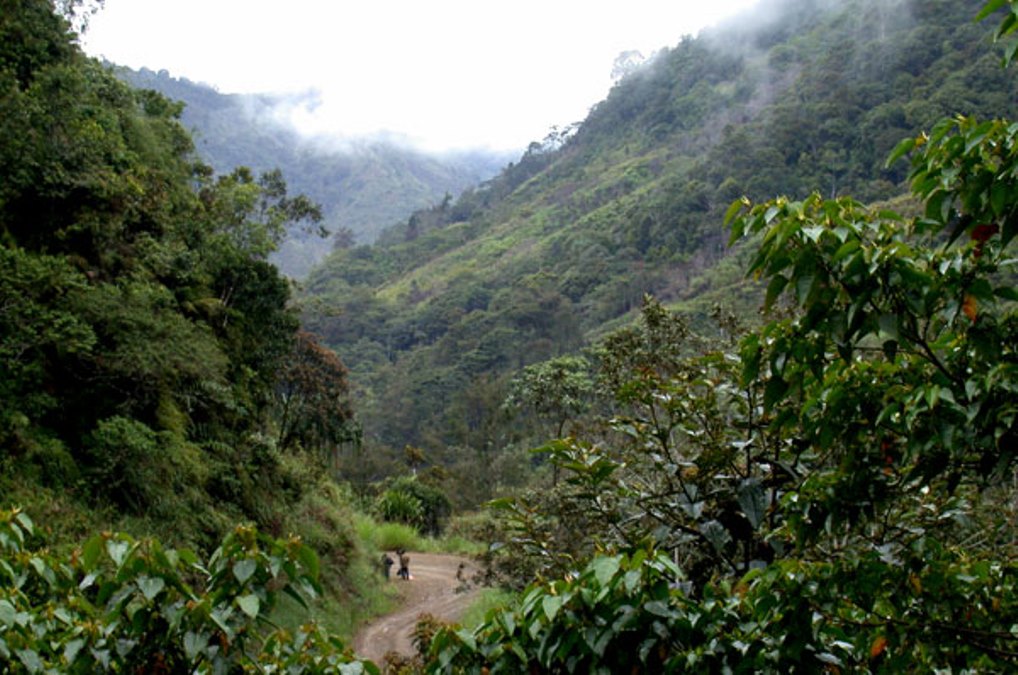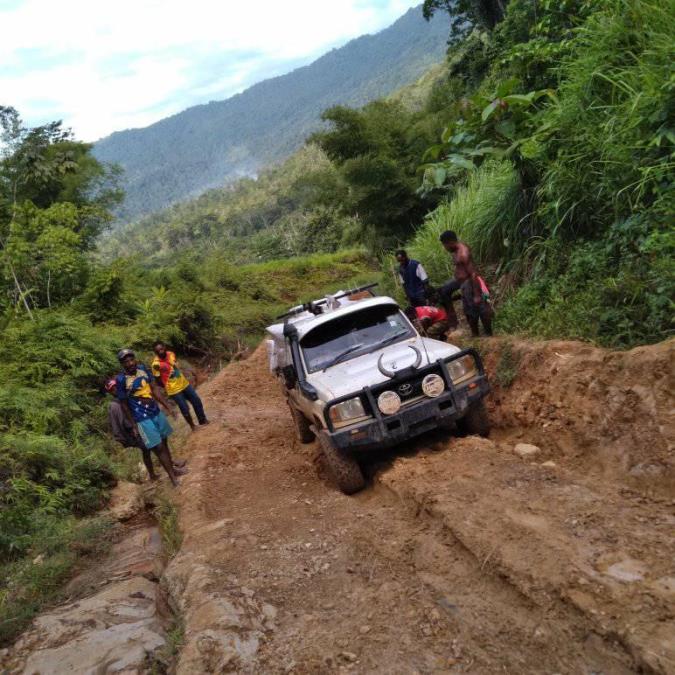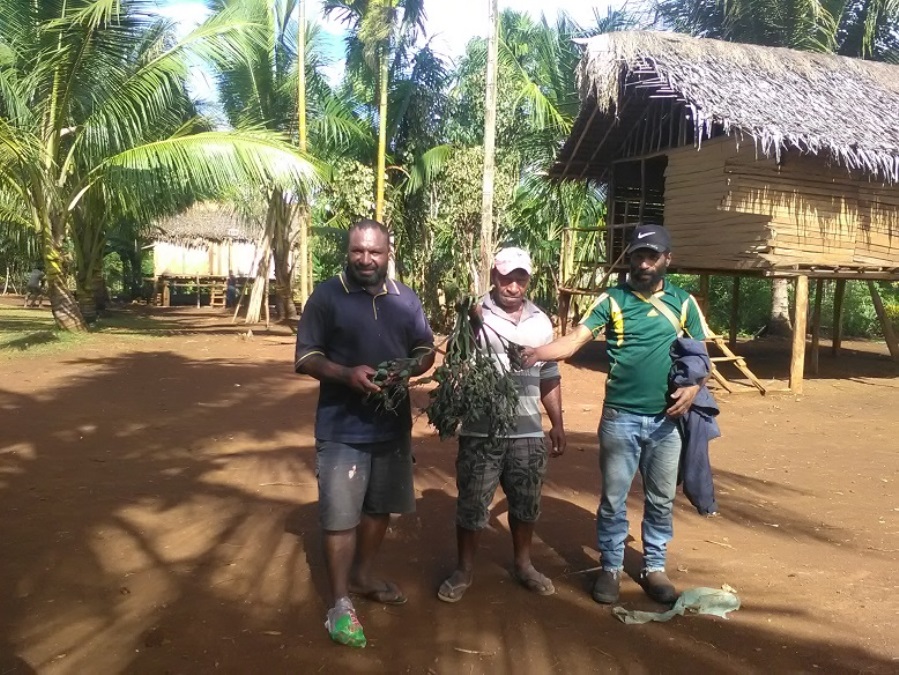
By PEARSON KOLO
THE benefits that will come with the completion of the Madang-Baiyer highway is huge with hectares of agricultural land and untouched forests of timber to be tapped into.
This will include the once renounced vast Ruti Valley, which hosted the Ruti Cattle Range in the 1960s in Baiyer, Western Highlands province
Other benefits will include the Jimi and Ruti Timbers, and the Jimi, Ramu and Ruti valleys for agriculture.
The road is constructed by the national government which started in 2009 under the connect PNG road infrastructure policy aimed at linking unlinked communities and places in the country by road.

The locals of Ruti and Baiyer River in the Western Highlands province and Jimi locals of Jiwaka and even the Sambaed people of Middle Ramu district are already preparing for the projected impacts of the Madang -Baiyer Highway, which will link them with the outside world.
The Marape-Basil government is prioritizing this highway under its connect PNG Policy and program, linking up every communities and districts of PNG by road.
The Madang Baiyer highway will linkup with the Trans Gogol highway in the Middle Ramu district of Madang province and then go into Simbai, Jimi and Ruti and into Baiyer valley linking Madang with Mt Hagen.
Department of Works Secretary David Wereh said recently that this road will be economically viable for the country.
“It involves construction of a new missing link, a new green field and the upgrading of existing roads from both ends – Madang and Baiyer.
“We need to demonstrate that the project is economically viable, and we want to see the clear benefits during the service life of the road,” Mr Wereh said.
Mr Wereh also said there were four to five missing links identified and for the first time the Connect PNG policy under the missing link target is to reach the unreached.

He said apart from the Madang-Baiyer highway, the government is also focusing on Telefomin, Maramuni, Finchhafen and the Gulf Southern Highlands highway where work is already in progress.
Middle Ramu MP Jonny Alonk stated last month that the highway construction, which began in Baiyer Western Highlands, ended at Jimi River and the PNGDF engineers are working now to link Jimi and Simbai.
“The big work on the Madang Baiyer road is on how to get through the Simbai mountains,” Mr Alonk said.
The MP said Simbai has cash crops and fresh vegetables to supply markets in the country and the road will be of great benefit to the farmers and other economic activities in the area.
“This road will also open up people and communities who have never seen vehicles and towns and that is the great thing about this new road link,” the Middle Ramu MP said.
According to Mr Alonk, Madang-Baiyer highway will greatly benefit Aiome and Simbai high schools and the people of Josephstaal, Arabaka, Simbai and Kovon LLGs.
Locals in Baiyer river, Western Highlands province are seemingly impatient and want the road to be completed quickly as they are already penetrating into Jimi and Middle Ramu with their four-wheel-drive vehicles through the pilot tracks constructed by the PNGDF engineers.
These locals are transporting peanut bags, betelnuts, coconuts and coffee into markets in Mt Hagen.
An Internal Revenue Commission (IRC) officer, Kila Ruri, who visited parts of lower Jimi last year said the Baiyer-Madang highway will indeed be a major economic benefit for the country once the road is completed.
Mr Ruri, who travelled from Baiyer river to lower Jimi on a 4WD and looked over to Simbai said the land which the road will link is untouched fertile agriculture land waiting for any crops to grow.

“The Baiyer, Ruti, Jimi and Ramu Valleys are rich fertile agricultural land waiting to be utilized for the benefit of the country,” Mr Ruri said.
Baiyer local, Max Yapasi, who took the IRC officer to Jimi said they have seen the opportunity to make money by transporting the people and their products into markets in Mt Hagen.
“We really want the highway to be completed quickly because by then, travelling to Madang from Mt Hagen would take half a day rather that a whole day along the highlands highway now.
“Those of us who have four wheel drive vehicles are already reaching Lower Jimi and parts of Middle Ramu and we know we are near Madang,” Mr Yapasi said.
The PNG Defense Force (PNGDF) engineering battalion based in Lae is taking the lead in constructing the Madang-Baiyer highway with assistance from the national government and development partners.
The total kilometers of the Madang-Baiyer highway is 255km, and the first phase of the road construction had been completed which includes the 49km from Baiyer River Bridge to Jimi River Bridge and 43km from Kakal junction to Ramu River bridge in Madang.
The second phase started from the Madang side to complete the remaining 87km and machineries and troops are already in Aiom, the district headquarter of Middle Ramu district.
So far, K29.531 million had been spent and that includes K4.79 million in 2018, and in 2019 the government allocated K15 million for the highway.
The Department of Works said work is on track to secure K300 million for the Madang to Baiyer highway under the Indian Exim Bank funding.
The PNGDF is determined to complete phase two of the Baiyer-Madang from Aiom in Middle Ramu to link Jimi River.
Engineering Battalion commander Lt Col Bruno Malau who is overseeing the road construction said the 50km Baiyer to Jimi River Highway started in 2009 and was completed last year.
Lt Col Malau said phase two would cover 110km, Aiom-Simbai 42km, Simbai-Ramu River 36km and Simbai-Jimi River 32km.
The PNGDF said from a total 255km of the alternative Highlands Highway, 92km of pilot track road works were completed which locals with four wheel drive vehicles are using.
This new link is expected to set new phase in the development of the country into the future.
